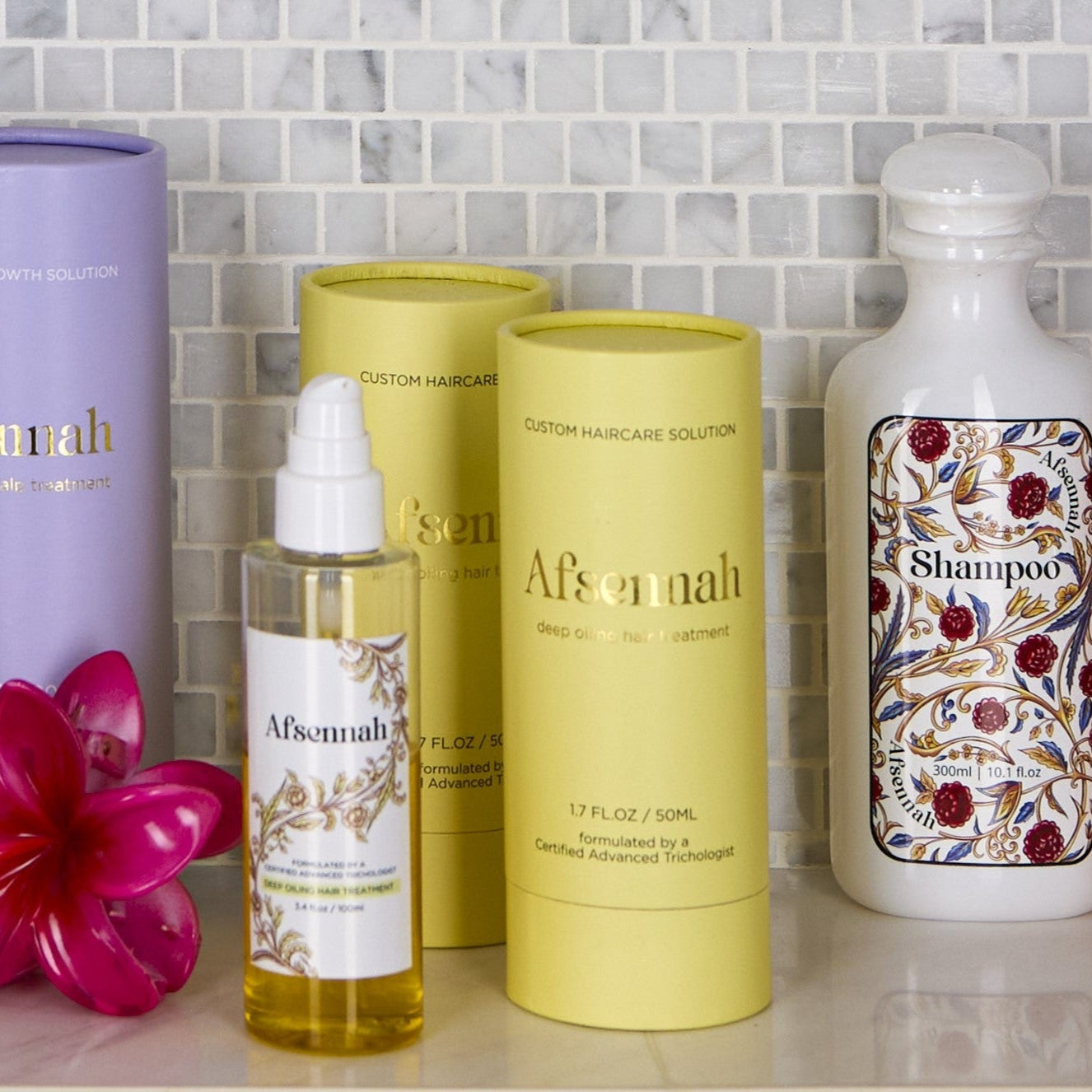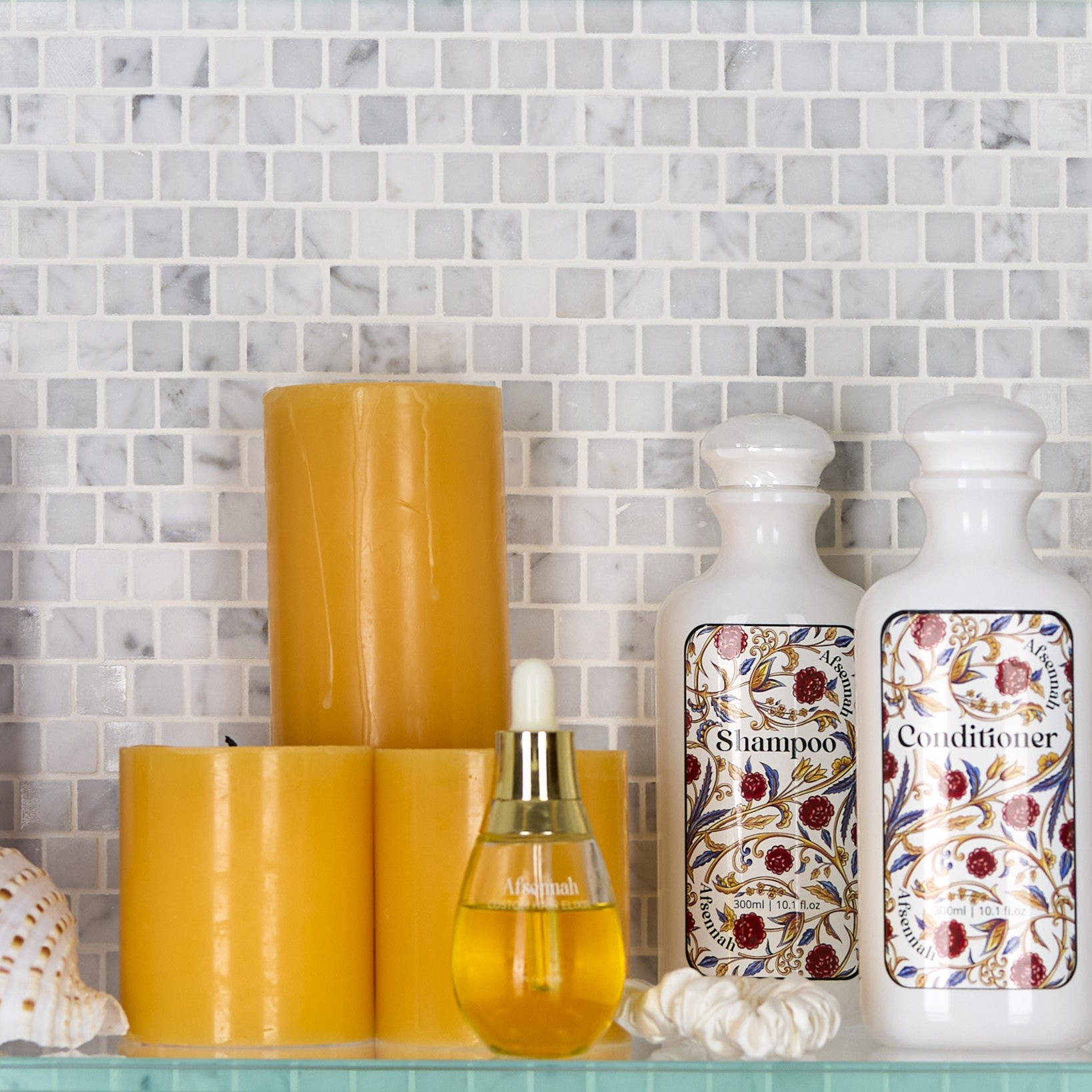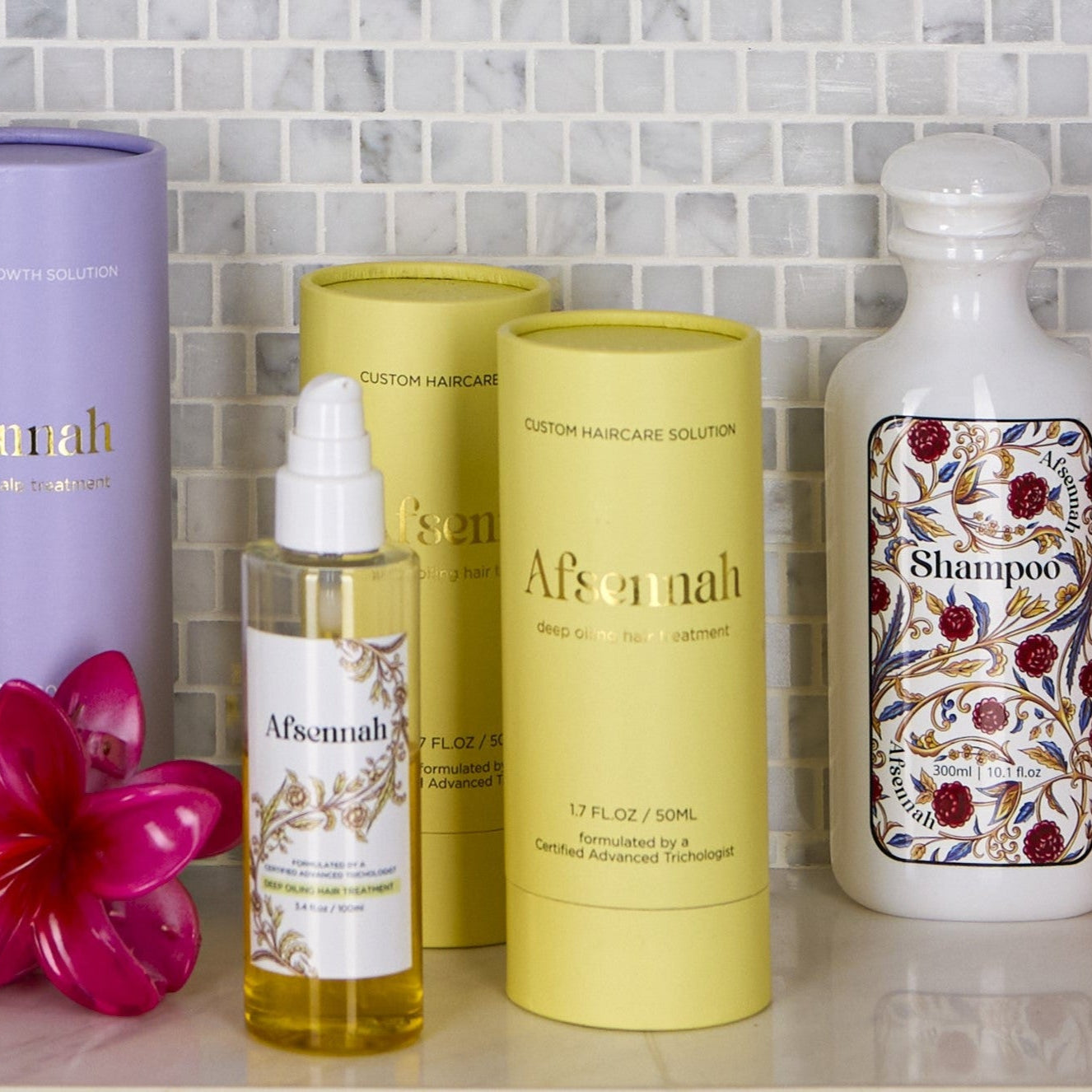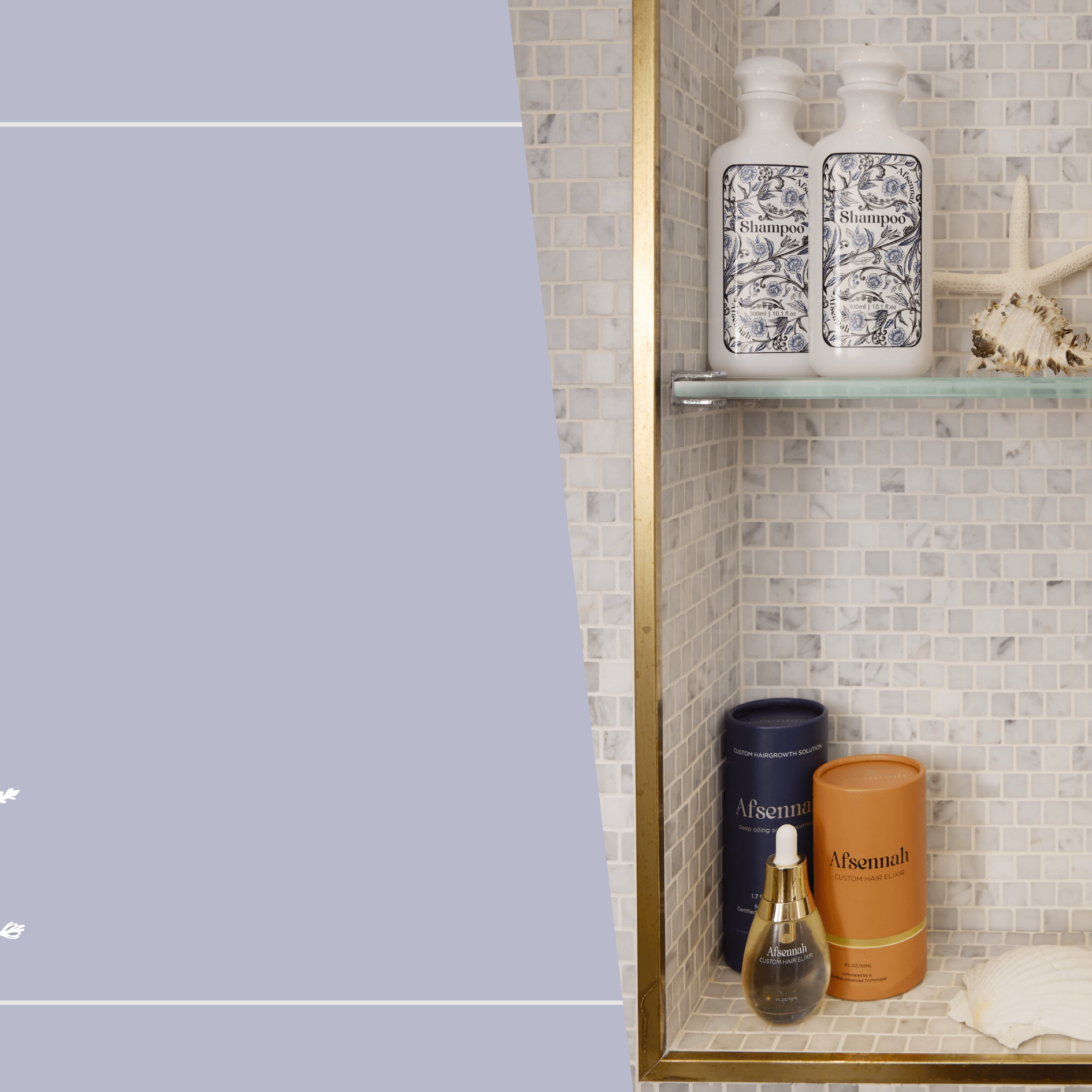Different types of hair brushes play a big role in how your hair looks and feels. But have you ever thought about which one you’re using? As experts in manufacturing high-quality men’s and women's hair growth products, we know that the right brush does more than detangle. We have compiled this guide to take you through the different types of brushes. This way, you can choose exactly what your hair needs!
10 Different Hair Brushes
Not all brushes work the same way. If you have thick, curly hair, you need something different from someone with fine or straight hair. The right brush, along with other hair care accessories, can make styling easier and keep your hair healthy.
Let’s break down the 10 most common types of hairbrushes and how they affect your hair.
1. Paddle Brush
A paddle brush is a large, flat brush designed for smoothing and detangling your hair. It works best if you have long, straight, or thick hair because it covers a wide section at once. The large surface helps distribute natural oils from your scalp to the ends, reducing frizz and adding shine.
If your hair tends to get static, choose a paddle brush with a rubber cushion. This absorbs impact and prevents flyaways, keeping your hair sleek without adding volume.
You can also use a pre-wash scalp oil to prevent static after you wash your hair.
2. Round Brush
A round brush is a cylindrical brush used for styling while you’re blow-drying. It helps create volume, curls, or waves, depending on the barrel size. A smaller barrel gives tighter curls, while a larger one smooths and adds lift.
Many round brushes have ceramic or thermal barrels that heat up as you dry, helping your style last longer. If you want bouncy volume or soft waves, this is the brush for you.
3. Boar Bristle Brush
A boar bristle brush is a natural-bristle brush that conditions your hair while you brush. It redistributes scalp oils from the roots to the ends, leaving your hair soft, smooth, and healthy-looking.
This brush is ideal for fine, dry, or frizz-prone hair because it reduces static and adds shine. If you prefer a cruelty-free option, some synthetic brushes mimic boar bristles while offering the same benefits.
If you have a dry scalp, consider using a high-quality hair oil for dry scalp to restore moisture. Brushing with a boar bristle brush helps spread the oil evenly for softer, healthier hair.
4. Nylon Bristle Brush
A nylon bristle brush is a synthetic-bristle brush that can easily detangle thick, coarse, or curly hair. The strong bristles glide through dense strands without causing breakage, making it easier for you to manage knots.
Some brushes combine nylon and boar bristles, so you get the shine-boosting benefits of boar bristles with the detangling power of nylon. If your hair gets frizzy or tangled easily, this brush helps smooth and control it.
5. Detangling Brush
A detangling brush is a brush specifically designed to remove knots without causing breakage. It works well on wet or dry hair, especially if your strands are thick, curly, or prone to tangling. The flexible bristles move with your hair instead of pulling, making detangling painless.
Some models have varying bristle lengths, allowing them to gently work through knots instead of ripping through them.
6. Vented Brush
A vented brush is a brush with open slots in the back, allowing air to flow through while you’re blow-drying. This speeds up drying time and reduces heat damage. The vents also help add volume while styling by lifting your hair at the roots.
If you’re always in a rush and need a quick way to dry your hair, a vented brush is a great choice. It’s especially useful for fine or medium hair that needs a boost of volume.
7. Cushion Brush
A cushion brush is a soft-bristle brush with a rubber base that absorbs pressure while brushing. It provides a gentle scalp massage, which improves circulation and helps remove buildup from hair products.
This brush works well for fine or thinning hair since it won’t tug or pull on delicate strands. If your scalp is sensitive or prone to irritation, a cushion brush is a great option for everyday use.
8. Teasing Brush
A teasing brush is a small, narrow brush that adds volume at your roots. It lifts your hair by gently backcombing sections, creating more texture and fullness. Many teasing brushes have a mix of boar and nylon bristles, giving you grip without causing too much friction.
If you have thin or flat hair and want extra height, this brush helps you achieve a fuller look without needing a lot of styling products.
9. Wide-Tooth Comb
A wide-tooth comb is a comb with widely spaced teeth. It detangles your hair without disrupting its natural texture. It’s the best tool for curly and textured hair as it prevents breakage and frizz while defining your curls.
It works best on wet hair with conditioner, allowing the product to coat every strand evenly. This comb is also great for distributing leave-in treatments or gently detangling thick hair without pulling.
10. Straightening Brush
A straightening brush is an electric brush that smooths hair while applying heat. It combines the function of a paddle brush and a flat iron, making it a quick and convenient way to straighten hair. It works best on wavy or slightly curly hair, turning it sleek in just a few strokes.
Many models have adjustable heat settings, so you can control the temperature based on your hair type. If you want a polished look without the damage of a traditional flat iron, a straightening brush is a great option.
How to Pick the Right Brush for Your Hair Type
Choosing the right brush makes a big difference in how your hair looks and feels. The wrong brush can cause breakage or frizz, or flatten your style. The right one helps with shine, volume, and detangling. Here’s how to find the best brush for your hair type.
For Thin Hair
If you have fine or thin hair, go for a soft boar bristle brush. It’s gentle and helps spread natural oils from your scalp to your ends, making your hair look healthier and shinier. It also smooths strands without pulling or causing breakage.
If you need extra volume, a teasing brush can lift the roots without damaging your hair. Avoid stiff plastic bristles, as they can be too harsh on fine strands.
Tips: Consider using a custom hair oil to nourish your scalp and strengthen delicate strands.
And if you have thin hair after pregnancy, there are special postpartum hair loss oils that nourish your scalp and support regrowth.
For Thick Hair
A nylon bristle brush works best if you have thick hair. Nylon bristles are strong enough to glide through dense strands without causing static. A paddle brush with a mix of nylon and boar bristles is also great. It smooths and detangles while adding shine.
If you like to style your hair, a round thermal brush helps shape thick hair when you’re blow-drying. Thick hair can be stubborn, so use a sturdy brush that gives you control.
For Curly or Textured Hair
A wide-tooth comb is the best tool for curly hair. It detangles without disrupting your curl pattern or creating frizz. If you prefer a brush, go for a detangling brush with flexible bristles. This works well on both wet and dry hair.
If you brush in the shower, a vented shower brush helps spread conditioner evenly through your curls. Always start detangling from the ends and work your way up to avoid breakage.
For Straight Hair
A paddle brush keeps straight hair smooth and sleek. If your hair gets static, choose a cushion brush with anti-static bristles to control flyaways.
If your straight hair feels flat, a round brush can add volume and movement. Look for one with natural or nylon bristles for the best results.
For Long Hair
A paddle brush is your best friend if you have long hair. It covers a lot of ground quickly and helps smooth and detangle without pulling. If you like styling waves or curls, a large round brush gives soft volume. Long hair tangles easily, so use a brush with flexible bristles to prevent breakage.
For Short Hair
A small round brush is perfect for short hair, especially if you use a blow dryer. It helps add volume and shape. If you prefer a sleek style, a boar bristle brush smooths your strands and reduces frizz. A teasing brush is also great for lifting the roots and making short hair look fuller.
For Oily Hair
A boar bristle brush helps distribute oil from your scalp down to your ends. This prevents greasy roots and keeps your hair balanced. Avoid metal or plastic bristles, as they can overstimulate oil production and make your hair look greasy faster.
For Damaged Hair
A detangling brush with soft, flexible bristles is the best choice if your hair is weak or brittle. It prevents breakage while removing knots. A cushion brush with gentle bristles also works well. Avoid stiff or harsh bristles that could pull and weaken your strands even more.
Tip: Consider using a custom shampoo with a custom conditioner. They are specially formulated to strengthen and hydrate your hair. They can also help restore softness and reduce breakage over time.
For Frizz-Prone Hair
A paddle brush with ionic or anti-static technology helps reduce frizz. If you want an ultra-sleek look, a boar bristle brush smooths your hair cuticle and tames flyaways. Look for brushes designed to fight static and keep your hair looking polished.
For Blow-Drying and Styling
If you use heat styling tools, a round thermal brush made of ceramic or tourmaline speeds up drying and protects your hair. A vented brush helps air circulate while you blow-dry, cutting down drying time and preventing heat damage.
If you straighten your hair often, a straightening brush combines a paddle brush with heat for a sleek finish.
The Benefits of Brushing Your Hair
Brushing does more than detangle knots. It plays an important role in hair health. Here are a few advantages of brushing your hair daily:
-
Distributes oils: Hair oils have many benefits, but they can accumulate unevenly on your scalp. Brushing spreads natural scalp oils from root to tip, preventing dry ends.
-
Boosts scalp circulation: The right brush stimulates blood flow, which can support healthy hair growth.
-
Prevents product buildup: Brushing helps remove dirt, oil, and leftover styling products.
-
Reduces breakage: Using the right brush for your hair type prevents pulling and split ends.
Tip: Overbrushing can cause breakage. Stick to what your hair needs, and clean your brush regularly to avoid buildup.
Frequently Asked Questions
What are the different types of hairbrushes?
There are many types, including paddle brushes, round brushes, boar bristle brushes, nylon bristle brushes, detangling brushes, vented brushes, cushion brushes, teasing brushes, wide-tooth combs, and straightening brushes.
What kind of brush is best for your hair?
The best brush depends on your hair type. For example, a boar bristle brush suits fine hair, a paddle brush works for long hair, and a wide-tooth comb is ideal for curly hair.
How many different styles of brushes are there?
There are at least 10 common styles, each designed for different hair textures, styling needs, and detangling methods.
What is the best brush for a ponytail?
A smoothing brush with boar or nylon bristles helps create a sleek ponytail by taming flyaways and distributing natural oils.







